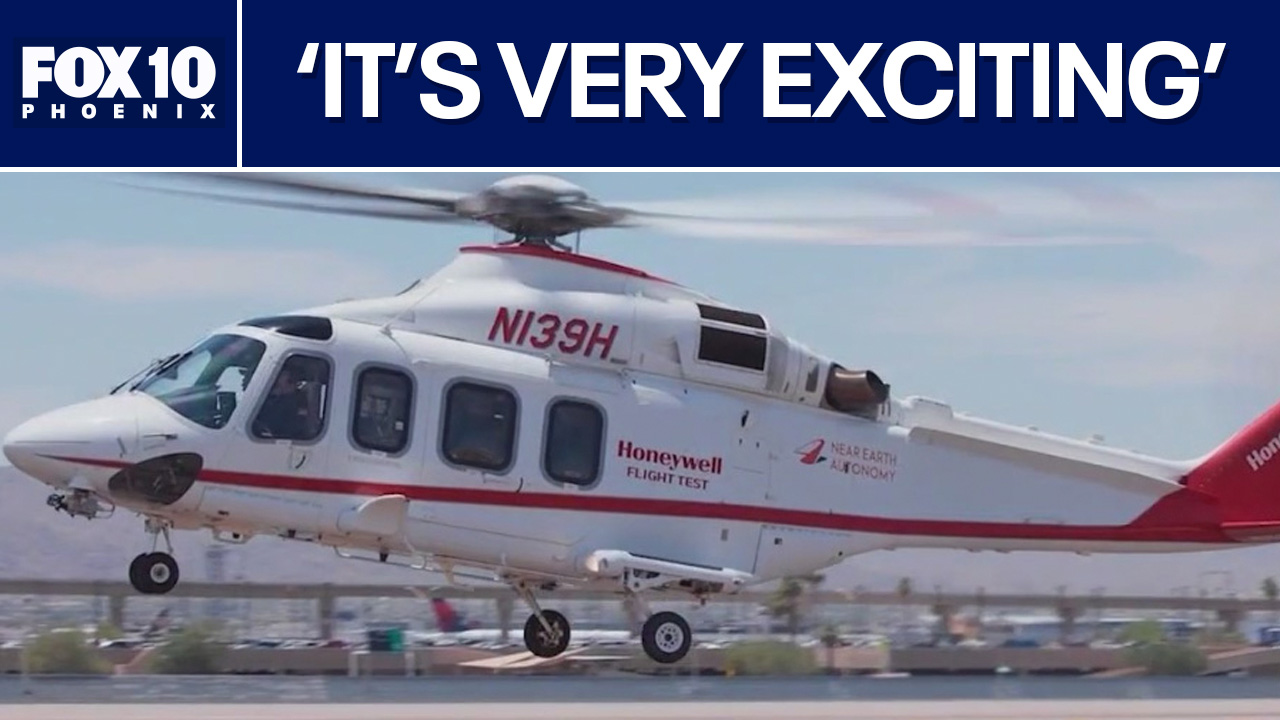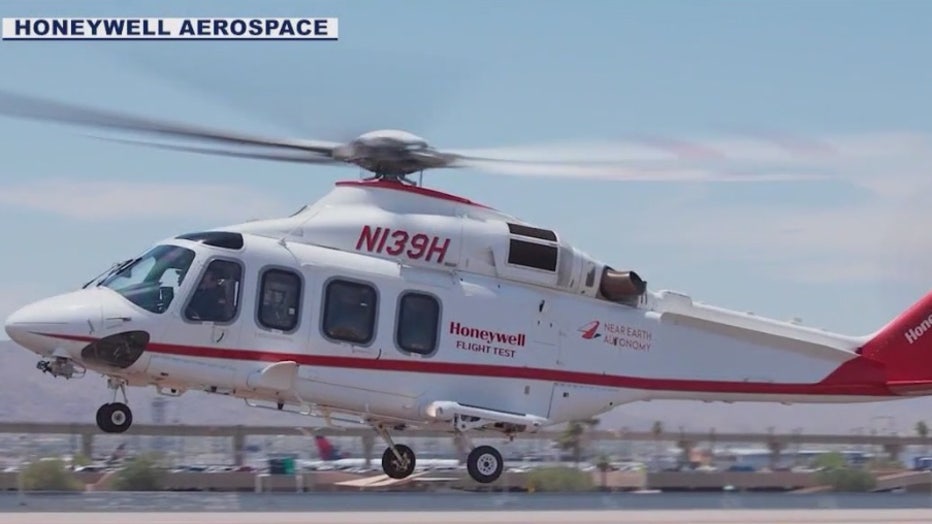Honeywell tests autonomous helicopters in the Valley

Autonomous helicopters tested by Honeywell
Could we soon be flying around the country without a pilot at the controls? That's the technology that is being tested and developed right here in the Valley. Honeywell, in conjunction with their partners, just completed their very first test flight of a fully autonomous helicopter. FOX 10's Ty Brennan reports.
PHOENIX - There may be test pilots sitting at the controls, but this helicopter is flying autonomously.
What they're saying:
"It started from a 50-foot hover, it took off, it accelerated to 50 knots, it slowed down, it came back to a hover without our intervention – we just kinda sat there and watched it do the business, right," said Bill Lee, a test pilot with Honeywell.
Lee is one of Honeywell's test pilots who flew onboard the very first autonomous flight of this Leonardo AW139 helicopter in late May.
"It's incredibly exciting to see us expand the envelope – that's what we do in flight test – we expand the envelope, and now we're doing it in an autonomous vehicle," said Lee. "We are allowing the aircraft to fly itself. Again, it will take baby steps to get it there."
Honeywell is working in conjunction with one of their partners, called Near Earth Autonomy, to develop the technology.
"The goal is to take an existing airframe that they are already familiar with and that's already in the fleet, show that that same airframe can be used for different use cases," said Sapan Shah, a senior product director.
In this case, to make the existing military helicopters fully autonomous, Honeywell says this particular technology would support the U.S. Marines Corps' aerial logistics connector program.

Could we soon be flying around the country without a pilot at the controls? That's the technology that is being tested and developed right here in the Valley. (Honeywell Aerospace)
"I see a day where we do have more autonomously flown aircraft and there's a lot of benefits, particularly for the military with this program we are working on," Lee explained. "You can send an aircraft like this filled with cargo, resupplying ammunition and so on – so you can send that into the hot zone where the troops are and not risking the crew on board. It's going to make it much safer and more efficient for the military, and if you lose an asset, you lose an aircraft, but you haven't lost a me and you, right?"
Right now, everything is still going through the testing phase. The pilots are still sitting up in the cockpit and this is where the engineers sit, and this is all the technology that they use to make this helicopter autonomous, but one day all this technology will be out of here and this helicopter will be able to fly autonomously anywhere in the world – operated remotely.
"We've been experiencing Waymo for several years, and you're in Phoenix – a day doesn't go by where you don't see one, and I think that is slowly coming into aviation as well," said Shah.
With the way technology is advancing, we're not too far away from seeing these birds flying on their own.
"For me, it's very exciting," said Lee.

